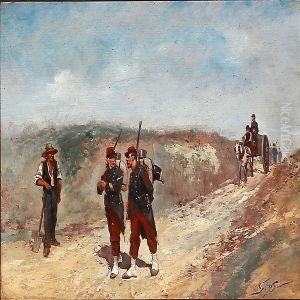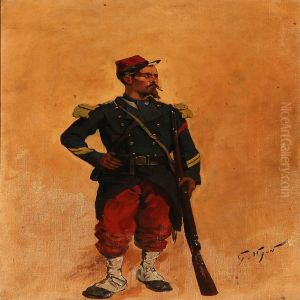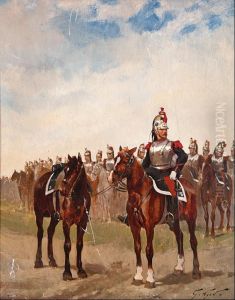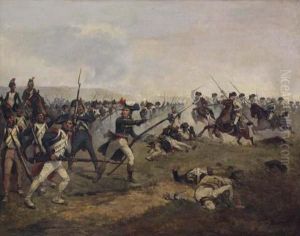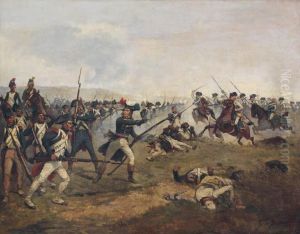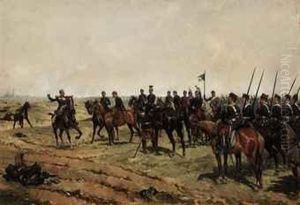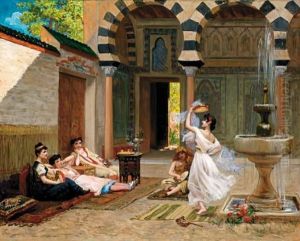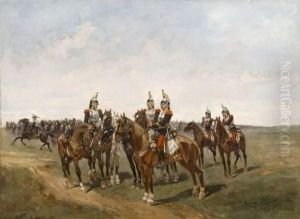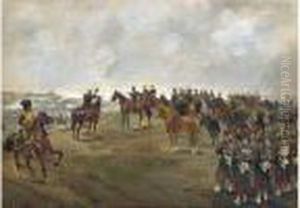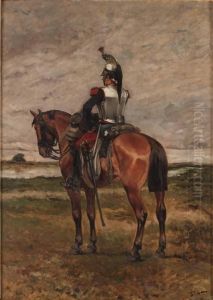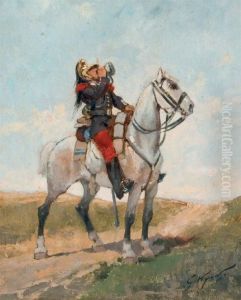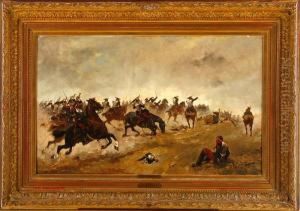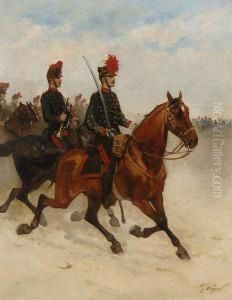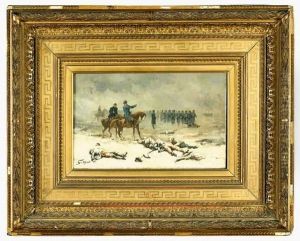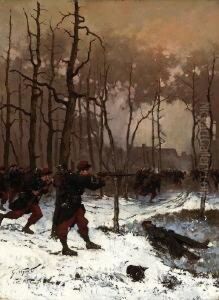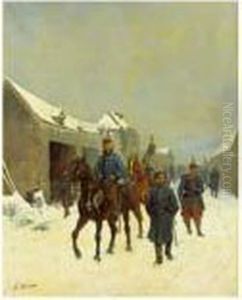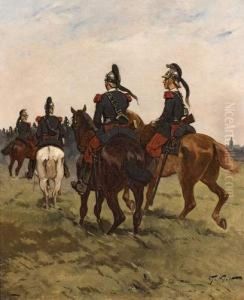Georges-Louis Hyon Paintings
Georges-Louis Hyon was a French artist born in 1821, during a period of significant cultural and political change in France. Throughout his life, he witnessed the tumultuous shifts of the 19th century, including the aftermath of the Napoleonic Wars, the rise of the July Monarchy, the Second Republic, the Second Empire under Napoleon III, and the early years of the Third Republic. These events undoubtedly influenced his artistic output, though he is less known today than many of his contemporaries. Hyon's work spanned various disciplines within the arts, but he is primarily remembered for his contributions to painting and illustration.
Educated in the French academic tradition, Hyon's style was rooted in the meticulous techniques and classical themes popular amongst 19th-century French artists. However, he also demonstrated a keen interest in capturing contemporary life, a hallmark of the Realist movement that began to emerge during his career. Despite his classical training, Hyon was not averse to experimenting with the styles and subjects that reflected the changing tastes and social issues of his time.
Throughout his career, Georges-Louis Hyon participated in the Paris Salon, the official art exhibition of the Académie des Beaux-Arts in Paris. This prestigious event was a pivotal venue for artists to gain recognition, and Hyon's works were exhibited alongside those of the era's most celebrated artists. His paintings often depicted scenes of historical significance or everyday life, rendered with an eye for detail and a sensitivity to the emotional undercurrents of his subjects.
Hyon's legacy, while not as prominent as some of his peers, remains a valuable window into the artistic trends and societal concerns of 19th-century France. His works are preserved in several French museums and collections, where they continue to be studied and appreciated for their historical and aesthetic value. Georges-Louis Hyon passed away in 1909, leaving behind a nuanced body of work that reflects the complexities of his time.

